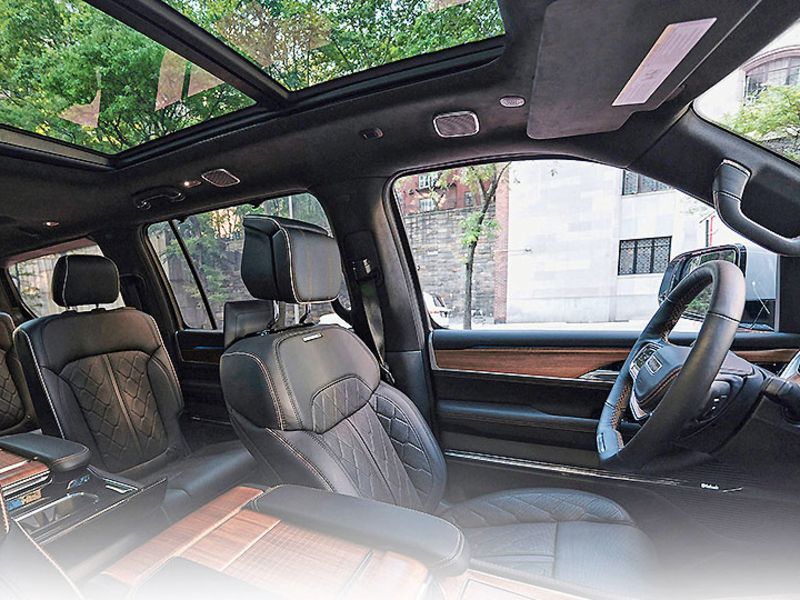
NEW YORK — After a foray into the countryside to test the off-road prowess of the Jeep Wagoneer, I was on a freeway heading back to Manhattan in its swankier counterpart, the Grand Wagoneer.
The massaging seats were hard at work, the McIntosh sound system was blaring, and the tri-pane sunroof let plenty of natural light into the expansive interior as I maneuvered through a construction zone that temporarily cut traffic to one lane.
The hefty Grand Wagoneer, with a smooth ride that belied its size, felt like a rolling living room. And it happened to be driving itself.
My hands were on the wheel, but the active driving-assist technology was doing all of the work. The vehicle features Level 2 automation that combines lane-centering with adaptive cruise control. The system, which uses sensors, radar and cameras, “dictates the appropriate roads for the technology” to engage on, Jeep says.
Jeep eventually plans to offer a hands-free version.
The vehicle was cruising at 55 mph and adeptly slowed on its own to stay with the flow of the cars ahead.
The episode made me recall a conversation with Jeep North America Vice President Jim Morrison, who rode alongside me earlier in the day.
Morrison didn’t think he ever would want to give up control of the vehicle, but he got addicted to the assist technology after a recent trip to Kentucky.
“It takes a boatload off you,” Morrison said.
The Grand Wagoneer is a technological showcase for Jeep that is ushering in greater autonomy and exhibiting new levels of craftsmanship and comfort for the brand.
Here are a few other observations on the Grand Wagoneer from the media drive in New York this month.
Visibility is critical while driving through New York traffic, and it was never an issue in the Grand Wagoneer.
The digital rearview camera displayed a video of what was behind me, a nice touch compared with the traditional mirror that can be obstructed by the rear seats. Plus, each side mirror had a section showing the blind spots.
I had a full view whenever I needed to move over quickly to make a turn, which was especially helpful during rush hour.
Amazon Fire TV for Auto is integrated into the Grand Wagoneer, giving users access to shows, movies, apps, vehicle features and the Alexa personal assistant.
While in the back seat during a demo, I scrolled through a touch screen menu, with Netflix, Hulu, Amazon Prime Video and YouTube at my fingertips.
Jeep says the content will sync with an existing Amazon account, as other Fire TV devices do. Users can pause a show in their homes and continue watching it in the vehicle.
The passenger screens in the front and rear also feature an HDMI jack, which lets occupants connect their phone or tablet and turn the touch screen into a “mirrored extension of their device, allowing Internet searches, music and app use to project through the Uconnect 5 system,” the company said.
We tried out YouTube on one of the rear screens, watching boxing highlights. It was a crisp viewing experience with no apparent lag.
The Grand Wagoneer and Wagoneer are the first SUVs with a front-passenger infotainment screen. The 10.25-inch screen is shielded from the driver’s view by a privacy film on the glass.
The front passenger has the ability to send destinations to the driver, which was a breeze to do.
After selecting where you want to go, an icon saying “send to driver” appears. Simply tap that, and the location is transferred to the center screen, where the driver can accept it.
The Grand Wagoneer comes standard with a 6.4-liter V-8 engine, but you won’t hear it much when cruising along at highway speeds.
Every now and then, though, it’ll remind you there’s a beast underneath the hood. When going up a fairly steep hill, the engine roared into action to get the 6,420-pound SUV to the top.
“This should be the quietest by far of anything in the marketplace,” Morrison said. “We’re having a good conversation, the radio’s going, and it’s nice and quiet. You don’t hear the exhaust droning.”

